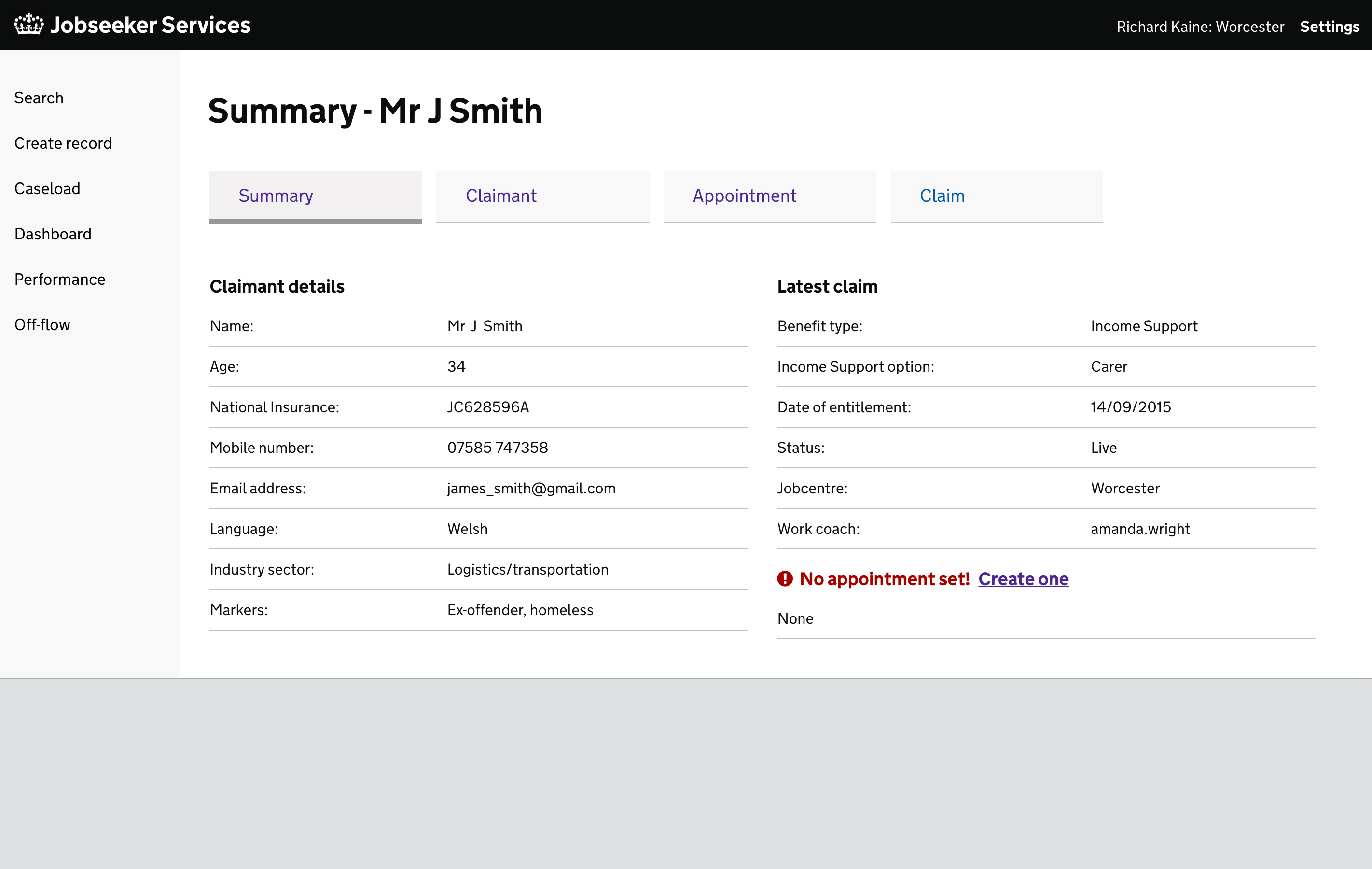Department for Work and Pensions


Public-facing, responsive site to help people who've lost track of their workplace and personal pensions.
There is currently an estimated £400m in unclaimed pension savings, money which people need for their retirement.
The site helps people locate these savings.
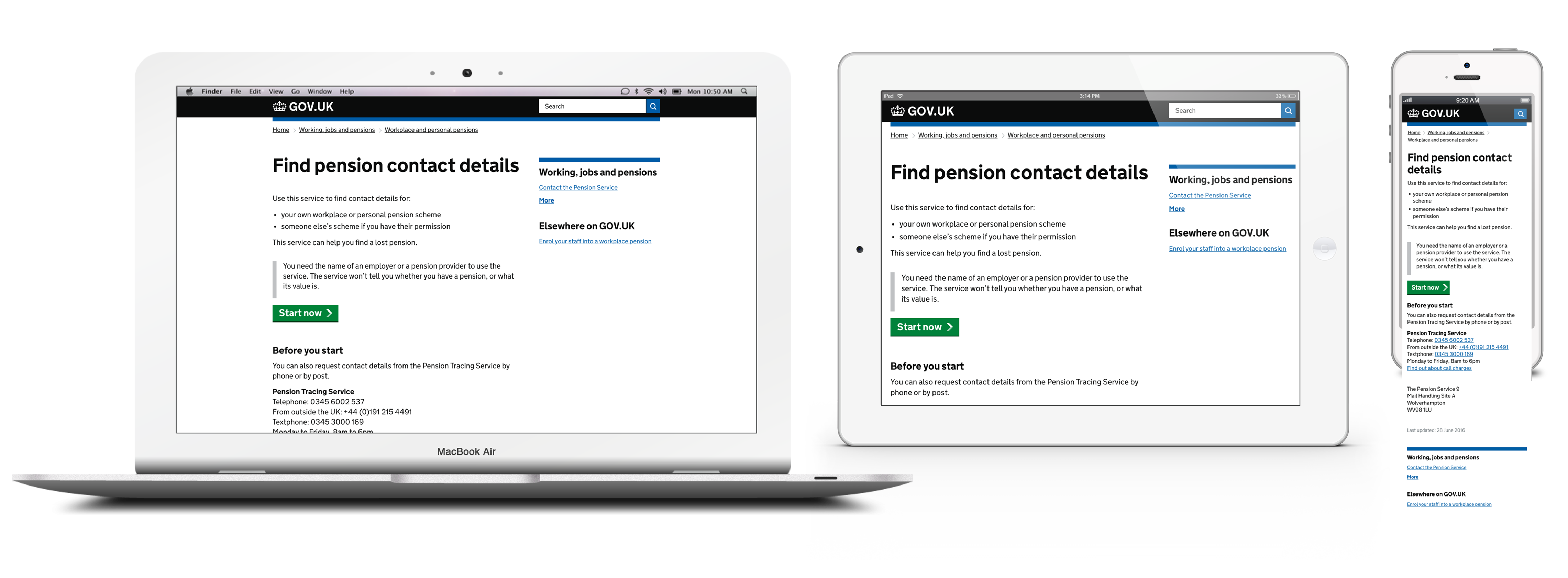
During the Discovery stage of this Agile project, citizens were interviewed who'd lost track of their pensions. We wanted to take the time to understand the problem area properly, and empathise with our users.
Underlying motivations, frustrations and the entire ecosystem of the existing phone and paper-based service were researched and documented on paper and video.
Provisional personas were mapped against different internal and external processes in order to build a collective understanding of different user needs.
These led to the experience map below, which visually represented multiple data source findings to the team.
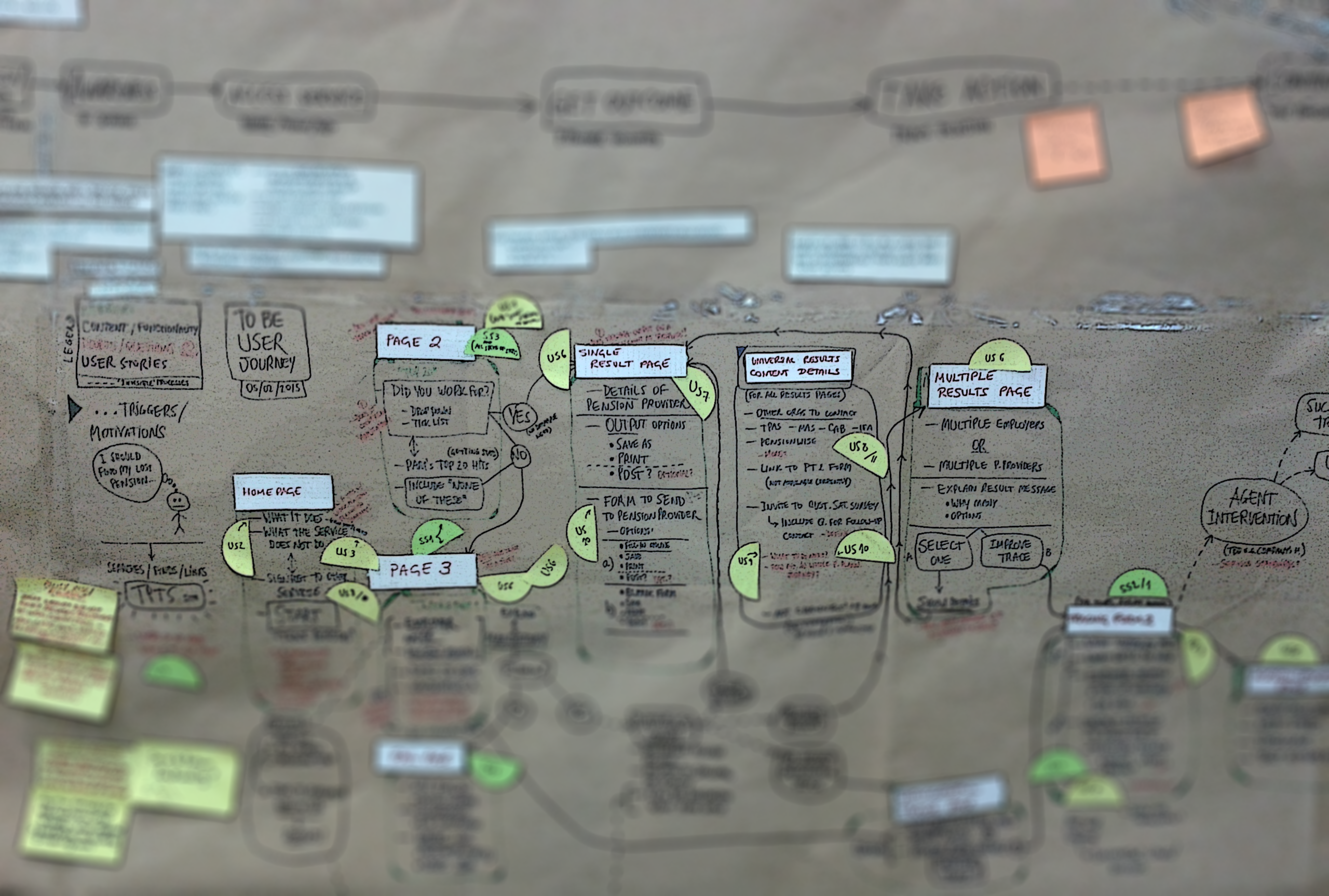
From the above experience map, we abstracted the refined user journey below, which focused on the UI build itself.
This served as a starting point for rapidly sketching out iterative solutions for the individual pages of the product, and also as a concise communication tool for wider stakeholders to understand the user journey.
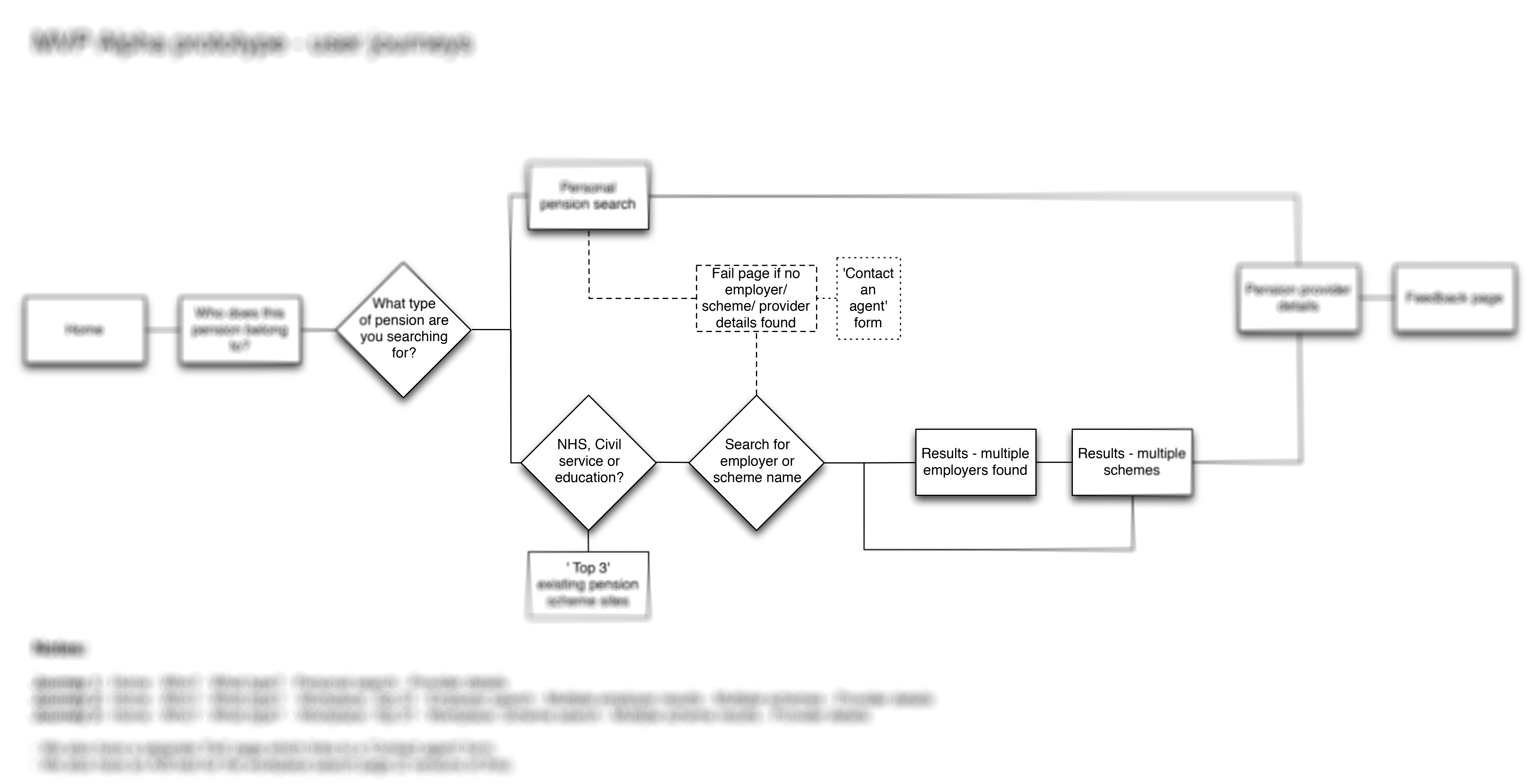
Once the sketches were discussed within the team, we created html prototypes of the strongest concepts for user testing.
These were iterated upon many times during the Alpha sprints of the project.
Below is an early iteration of a results page for a citizen who's looking for an old workplace pension.
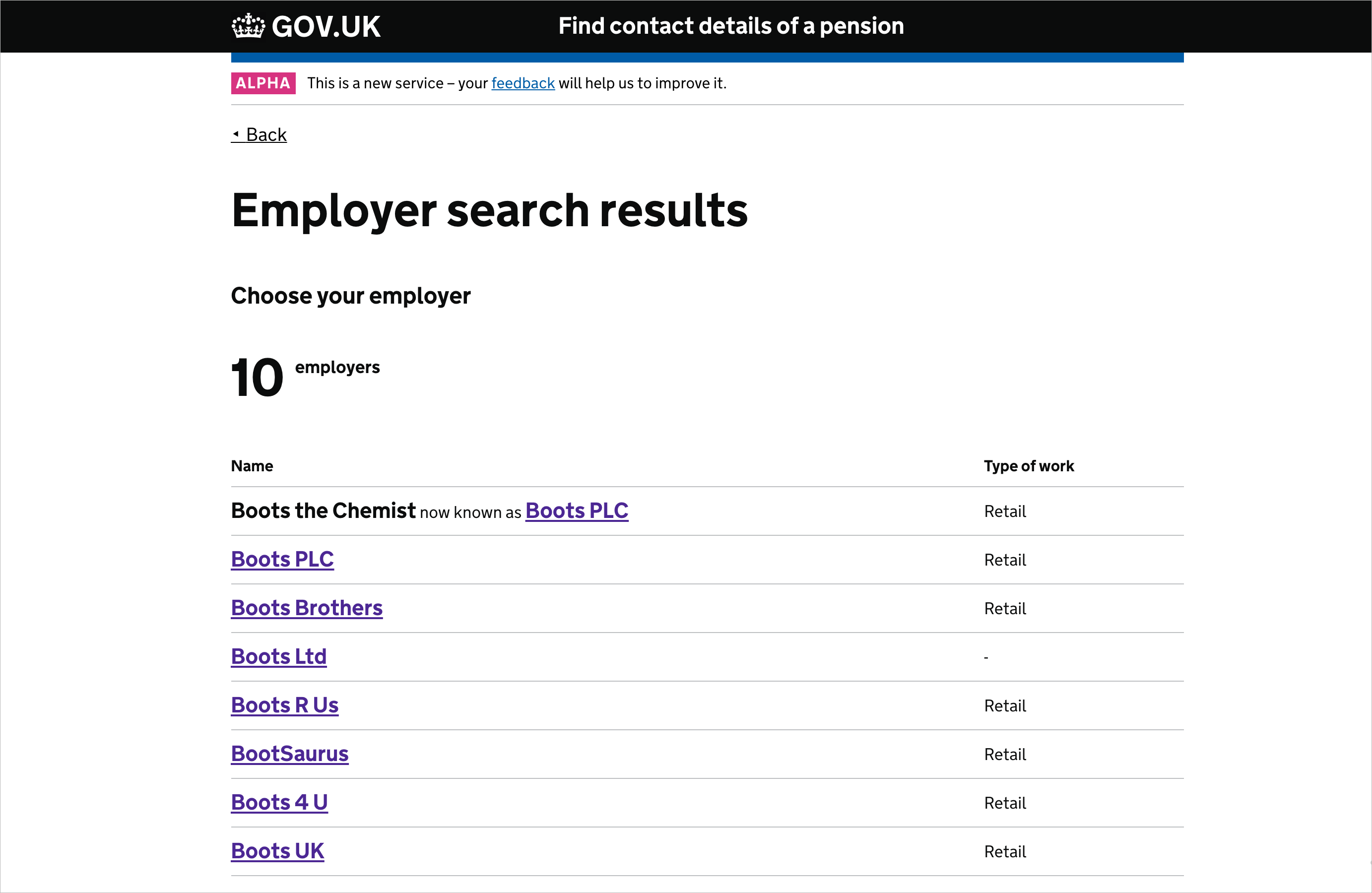
Once the project was in Beta, we worked with Front-end Developers to create another prototype which was database-driven, meaning we could improve the service using live performance data.
We adopted evidence-driven decision making, with key metrics helping us use hypothesis-driven design to prioritise product improvements.
Beta involved a cross-team collaboration to bring evidence into the project team steadily as we moved towards a fully live service; UX, User Researchers, BA's, Analytics and Developers should all be focused on success metrics.
Below is a Beta iteration of the same results page, using dummy database data.
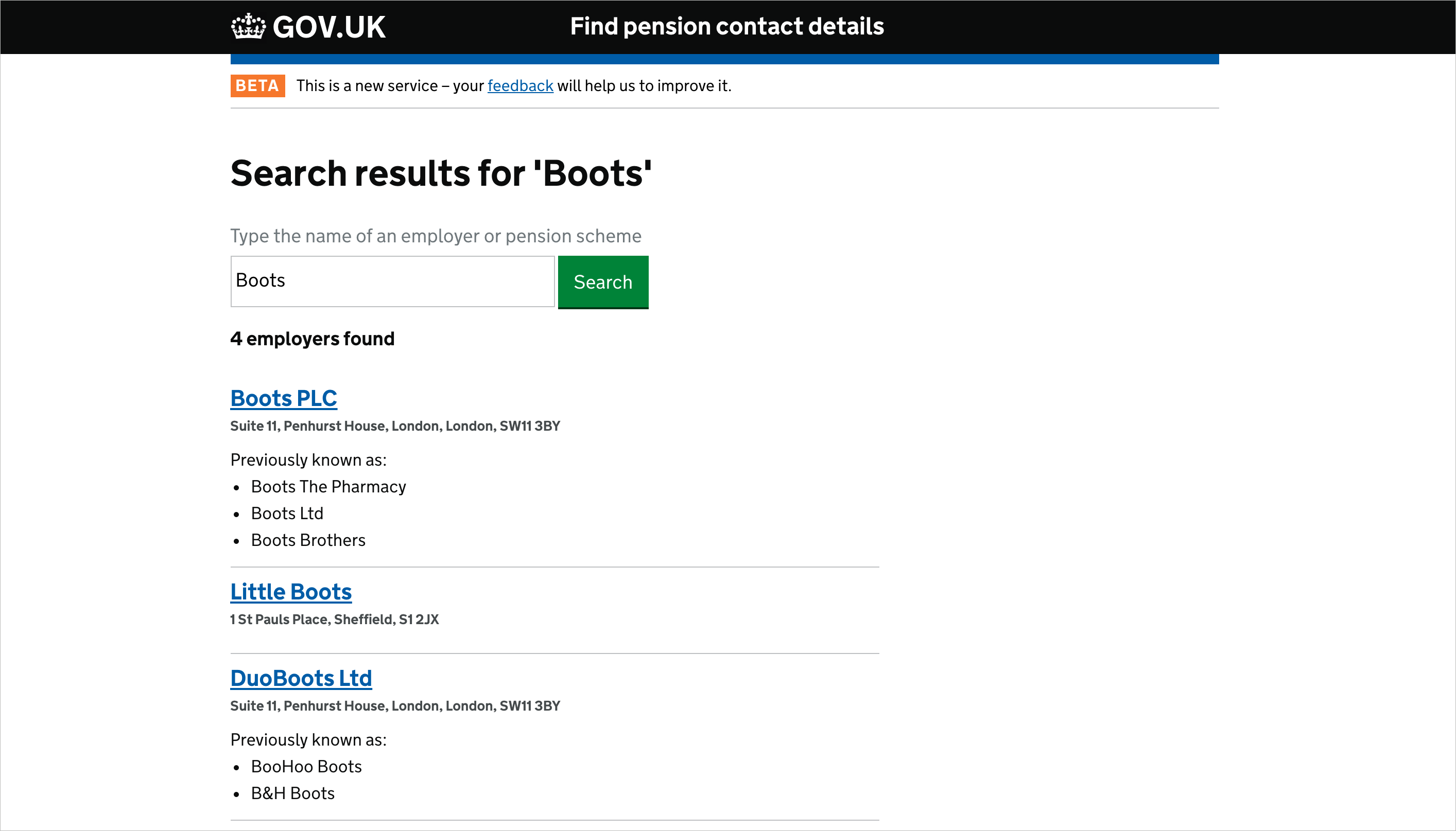
The site went live in early 2016. It has been tested with users and 83 per cent are either satisfied or very satisfied with the service they received.
Minister for Pensions, Baroness Ros Altmann said on average people have 11 jobs during their working lives which can mean they have as many work place pensions to keep track of:
The new DWP online Pension Tracing Service helps reunite people with their lost pensions, giving details of providers to help people track them down.
Below is the iteration of the results page which was launched.
Visit the Find a Lost Pension site to see more.
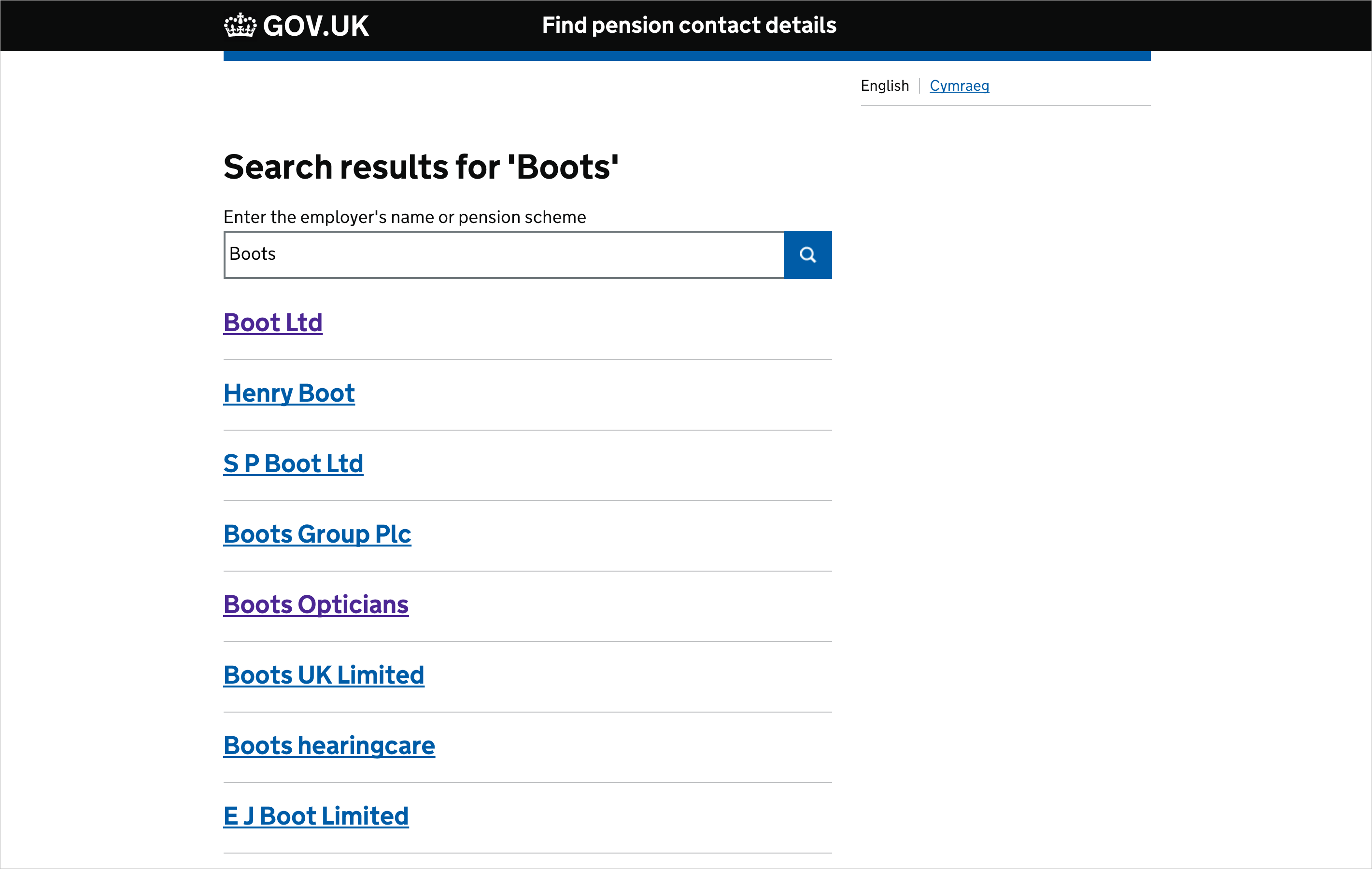
Enhanced Jobseeker Services was an internal DWP project.
Its end users were Workcoaches in Jobcentres who met jobseekers, processed their claims and provided this data to management.
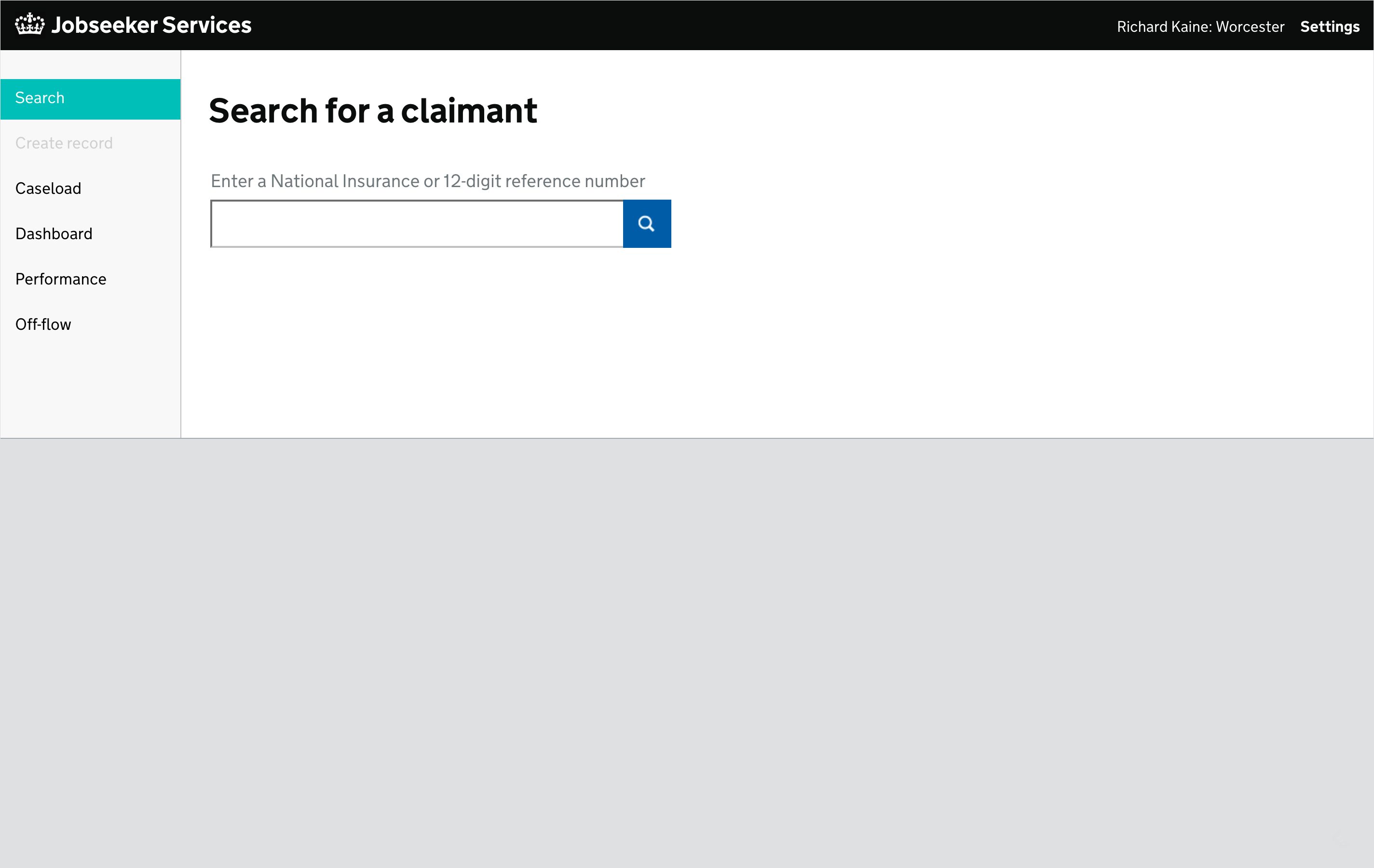
The brief presented 3 main challenges:
The final product was designed to meet these challenges in a number of ways:
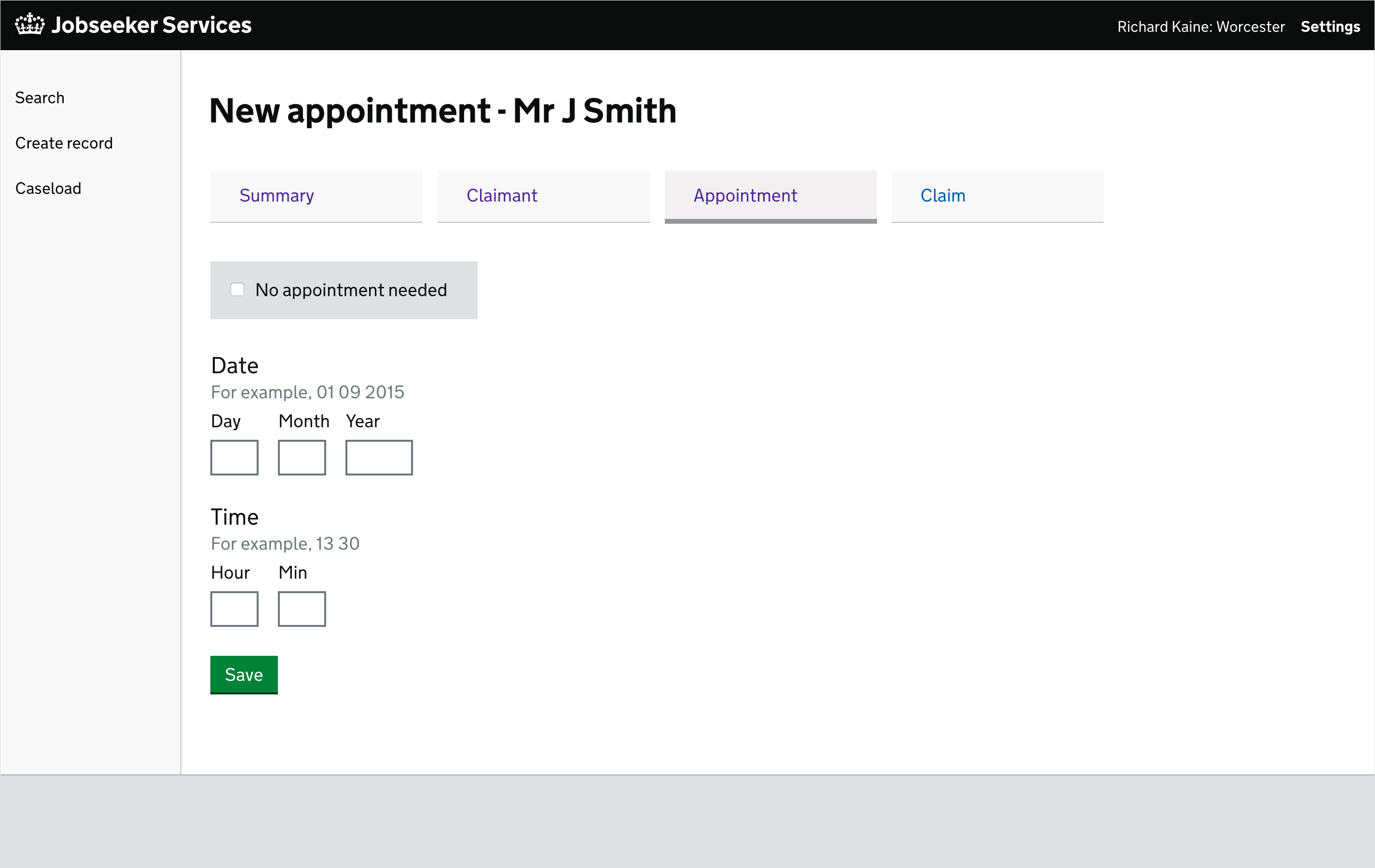
Our Discovery research, user testing during Alpha and contextual enquiries during Beta all illustrated that Workcoaches in Jobcentres had particularly busy daily schedules.
A trend towards meeting more claimants while collecting further more data had developed in recent years.
As such, we sought to encourage cultural change within the Jobcentres to accompany the launch of the product.
We sought to reverse the trend of increasing non-essential data collection and foster a culture of greater collaboration between regional areas of the department.
The launch of a quicker, digital product to process claimants, coupled with less data collection, meant that Workcoaches had more time between appointments to focus on providing value to the benefit claimants most in need of extra support, guidance and provisions such as training courses.
